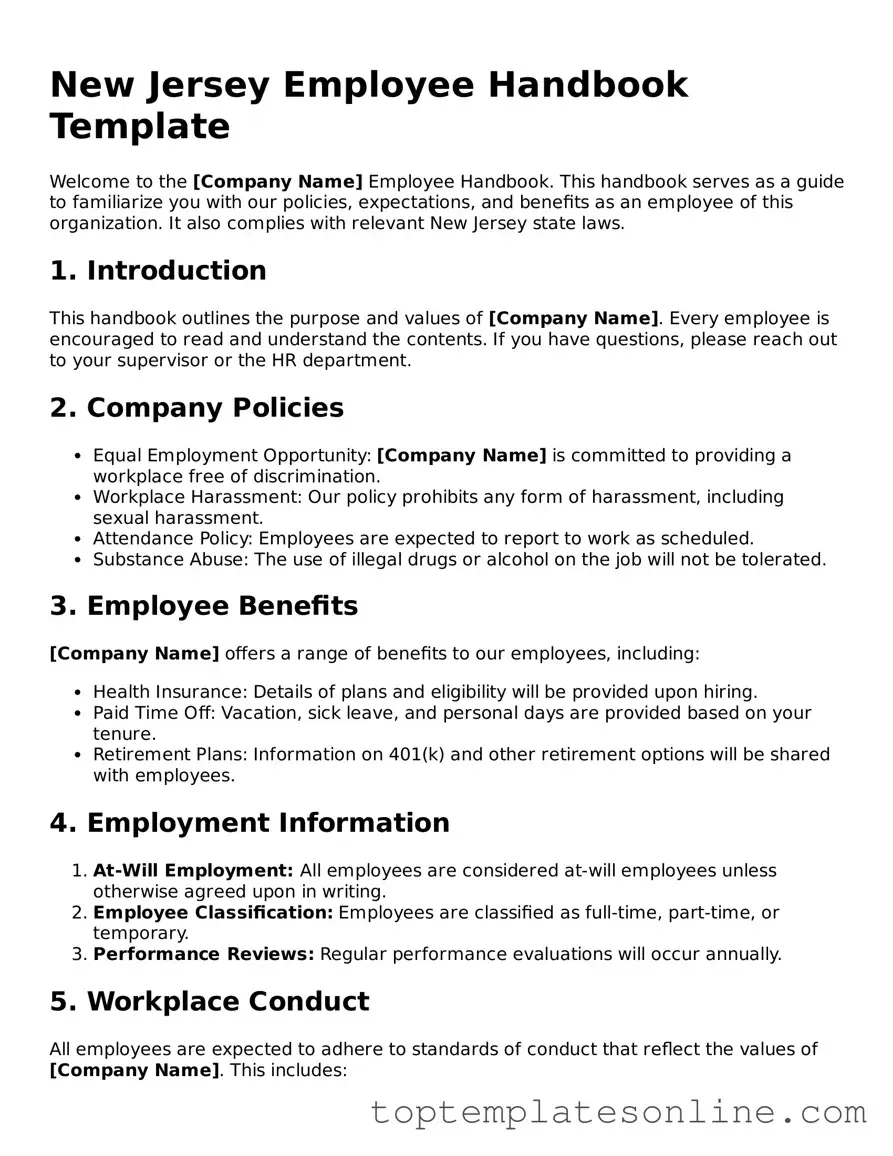Blank Employee Handbook Template for New Jersey State
The New Jersey Employee Handbook form is a vital document that outlines the rights, responsibilities, and expectations for both employers and employees within the state. This form serves as a guide to workplace policies, helping to foster a clear understanding of company culture and legal obligations. By utilizing this form, organizations can promote a positive work environment while ensuring compliance with state laws.
Customize Employee Handbook Here
